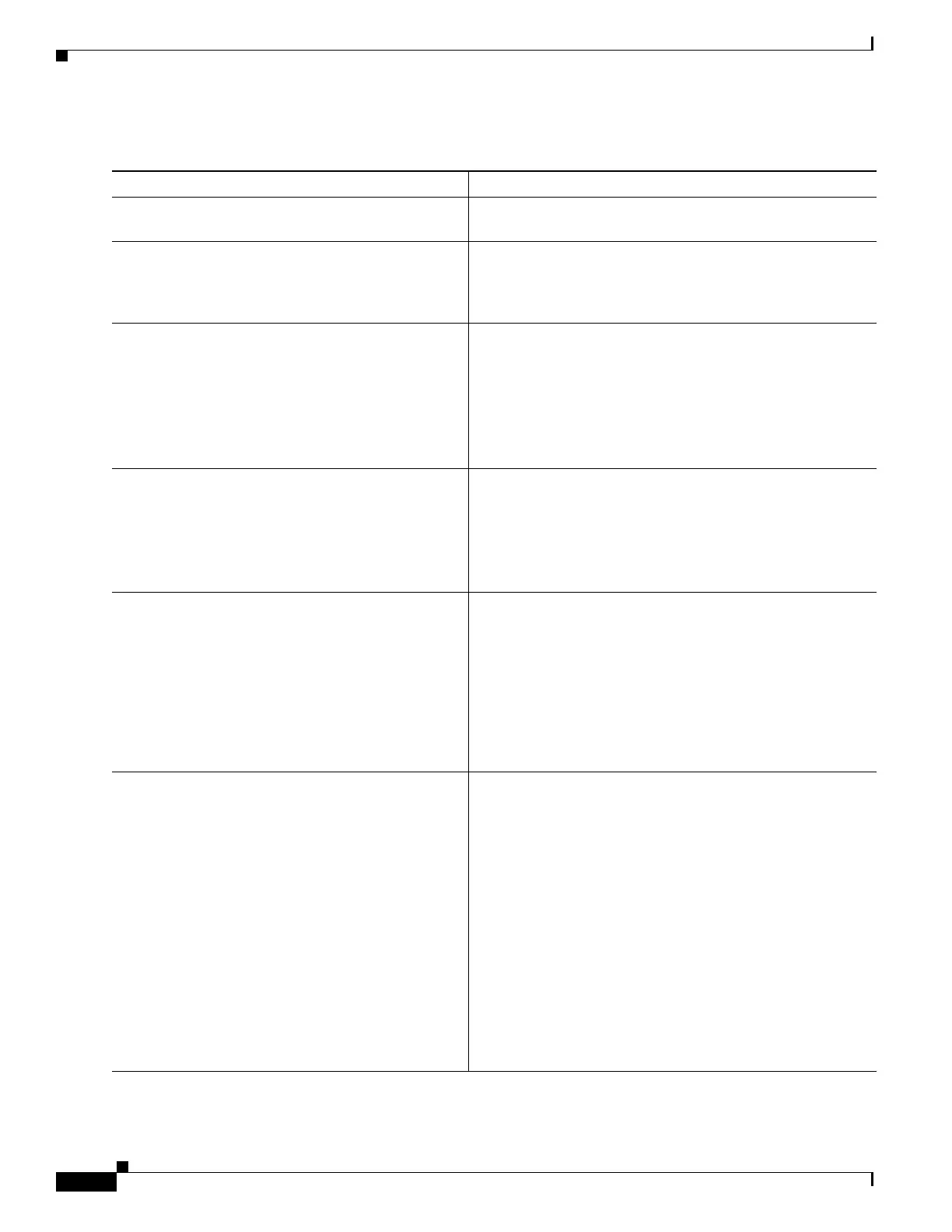42-8
Catalyst 4500 Series Switch, Cisco IOS Software Configuration Guide - Cisco IOS XE 3.9.xE and IOS 15.2(5)Ex
Chapter 42 Configuring Policy-Based Routing
Policy-Based Routing Configuration Tasks
To enable IPv4 PBR on an interface, perform this task:
Command Purpose
Step 1
Switch(config)# route-map map-tag [permit |
deny] [sequence-number]
Defines a route map to control where packets are sent. This
command puts the switch into route-map configuration mode.
Step 2
Switch(config-route-map)# match ip address
{access-list-number | name}
[...access-list-number | name]
Specifies the match criteria. The match criteria take the form
of one or more Standard or Extended IP access-lists. The
access-lists can specify the source and destination IP
addresses, protocol types, and port numbers.
Step 3
Switch(config-route-map)# set ip next-hop
ip-address [... ip-address]
Specifies the next-hop IP address to which matching packets
are sent. The next-hop IP address specified here must belong
to a subnet that is directly connected to this switch.
If more than one next-hop IP address is specified, the first
usable next-hop is chosen for routing matching packets. If the
next-hop is (or becomes) unavailable for some reason, the
next one in the list is chosen.
Step 4
Switch(config-route-map)# set ip next-hop
verify-availability [next-hop-address-sequence
track object]
(Optional) Configures the route map to verify the reachability
of the tracked object.
Note This option is not supported for IPv6 traffic.
For information about defining new tracked object, see
Verifying Next-Hop IP using Object Tracking , page 42-14
Step 5
Switch(config-route-map)# set ip next-hop
recursive ip-address
Specifies a recursive next-hop IP address.
Note The recursive next-hop can be a subnet that is not
directly connected.
The set ip next-hop recursive command does not ensure that
packets are routed through the recursive-next-hop if there is
an intermediate node with a shorter route to the destination
such that the route does not pass through the
recursive-next-hop.
Step 6
Switch(config-route-map)# set interface
interface-type interface-number
[... type number]
Specifies the output interface from which the packet will be
sent. This action specifies that the packet is forwarded out of
the local interface. The interface must be a Layer 3 interface
(not a switchport).
Packets are forwarded on the specified interface only if one of
the following conditions is met:
• The destination IP address in the packet lies within the IP
subnet to which the specified interface belongs.
• The destination IP address in the packet is reachable
through the specified interface (as per the IP routing
table).
If the destination IP address on the packet does not meet
either of these conditions, the packet is dropped. This action
forces matching packets to be switched in software.k

